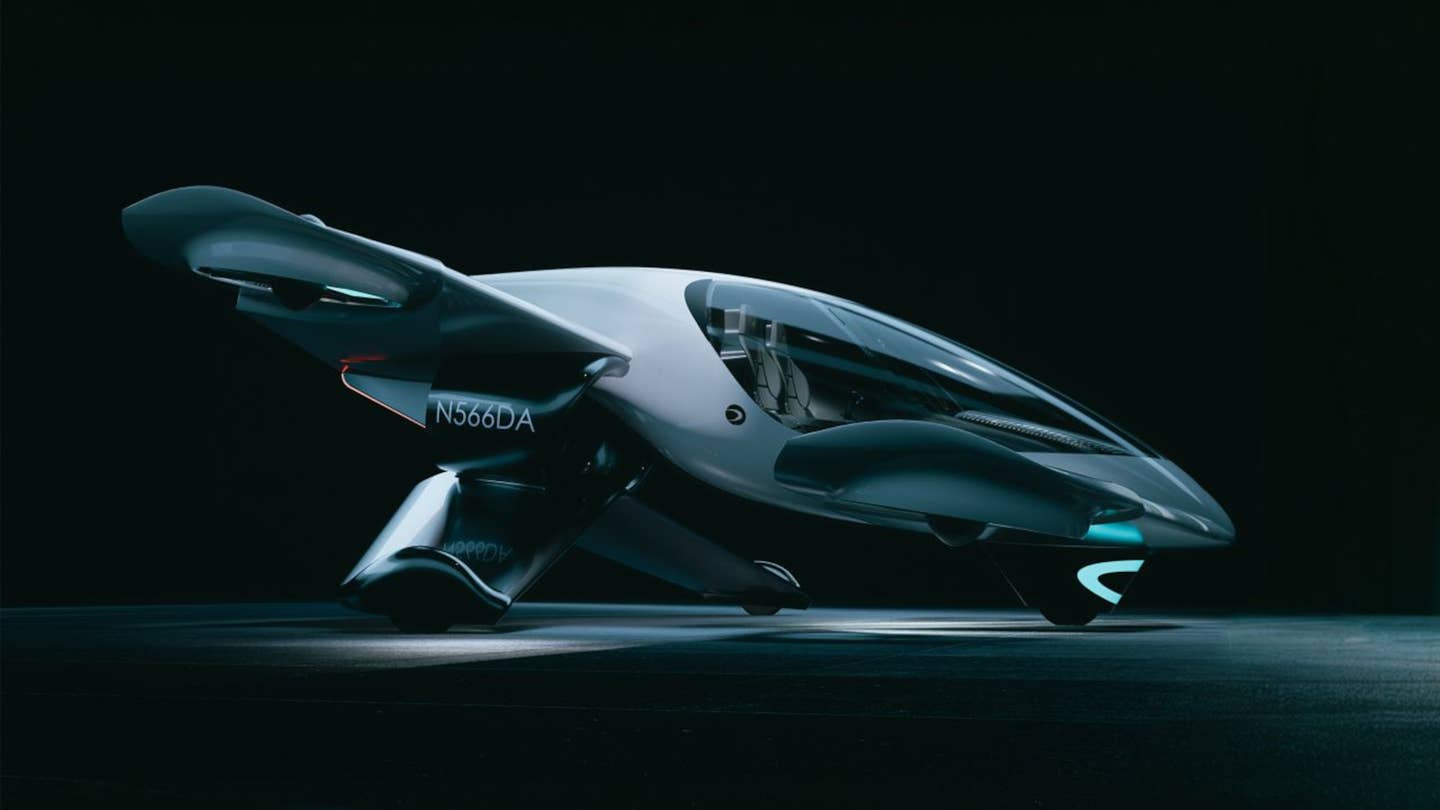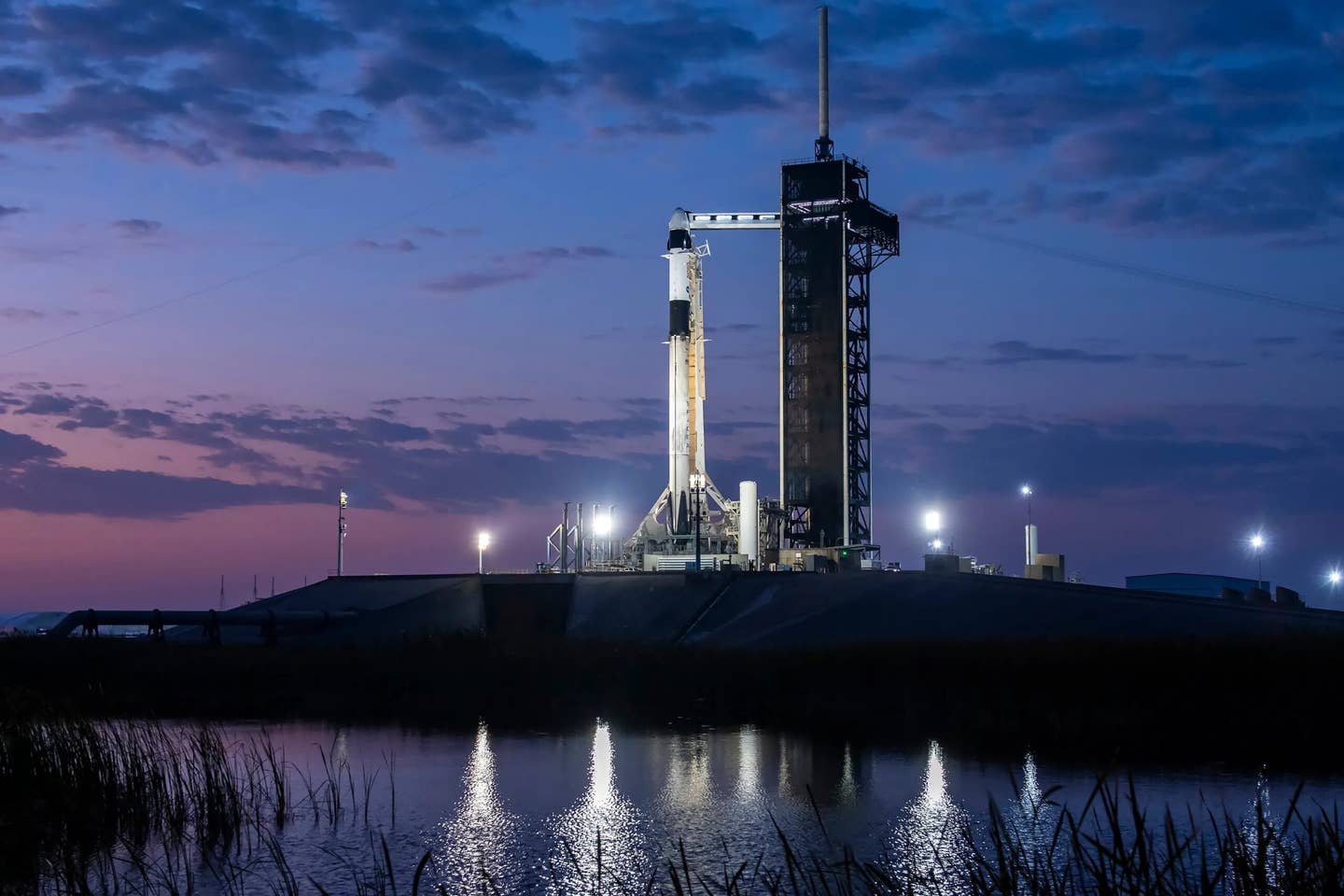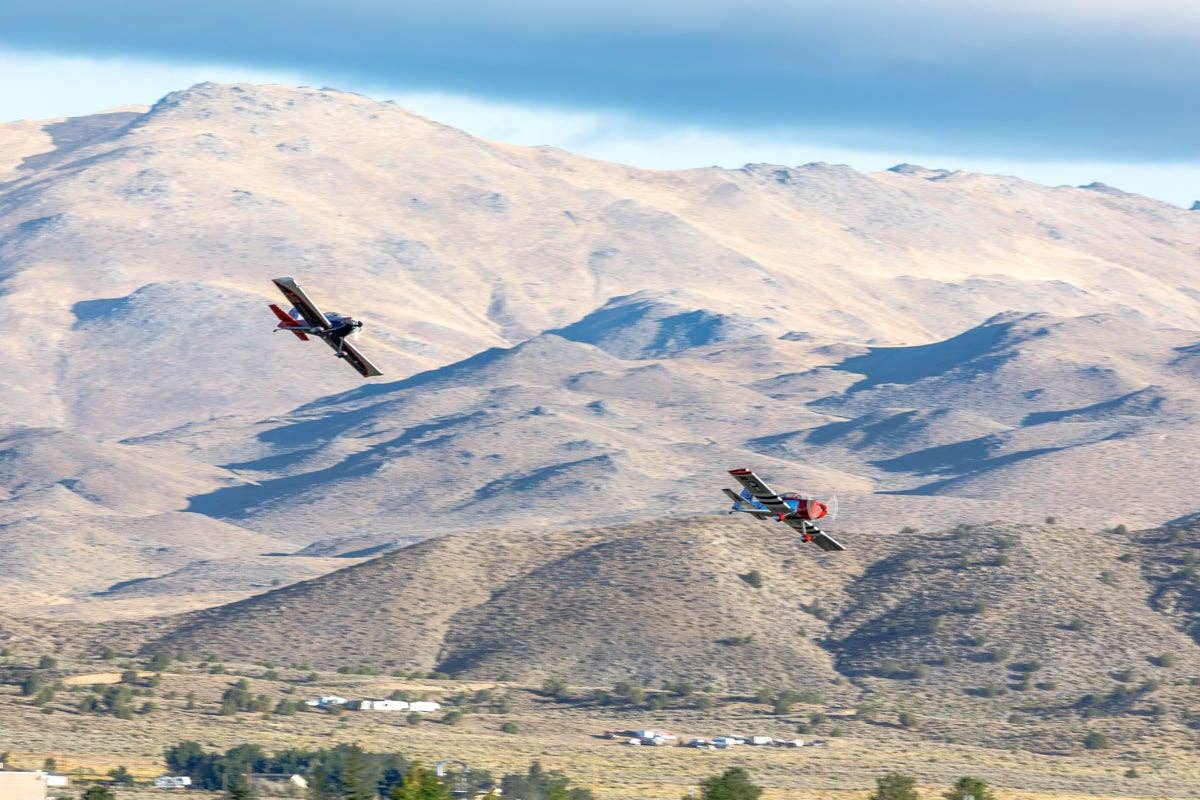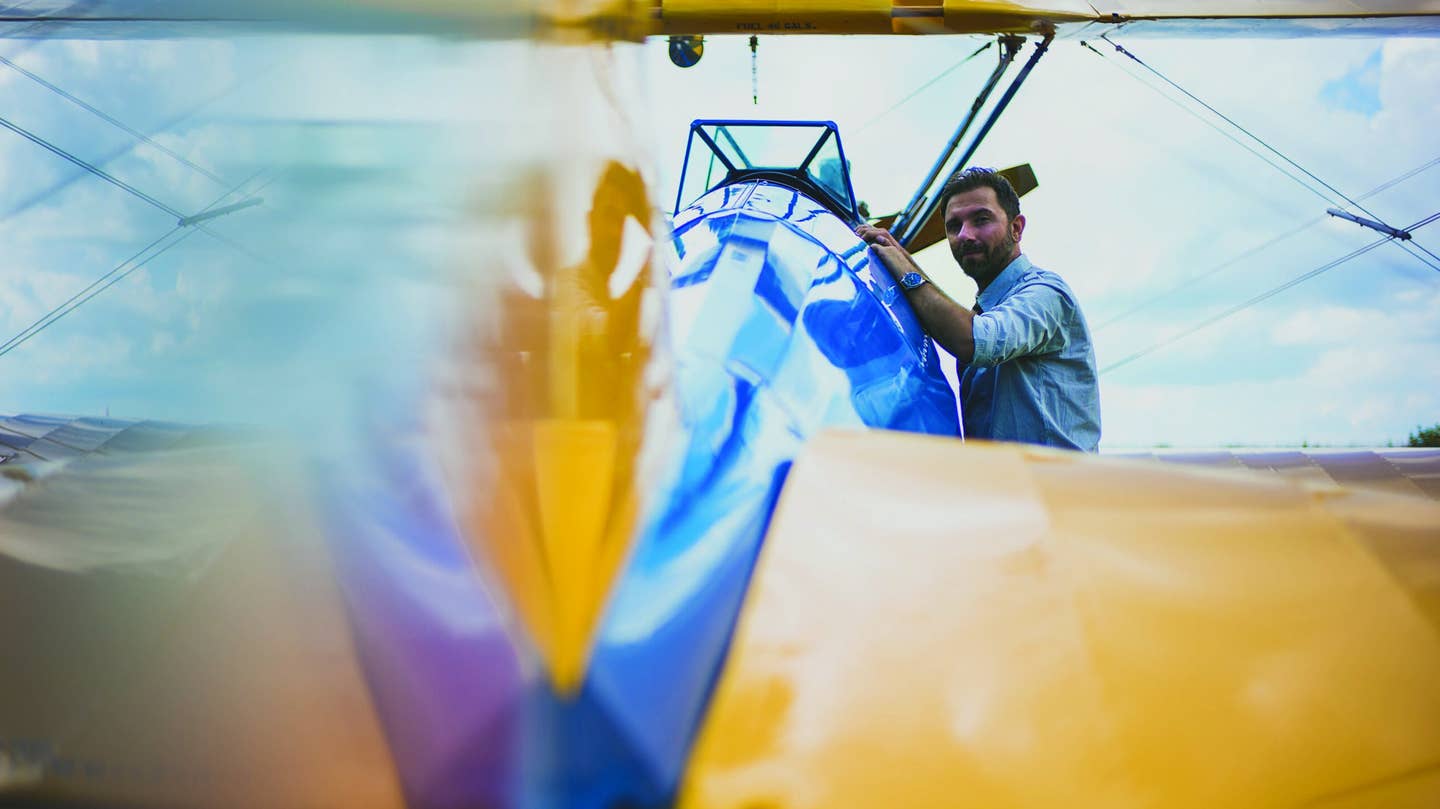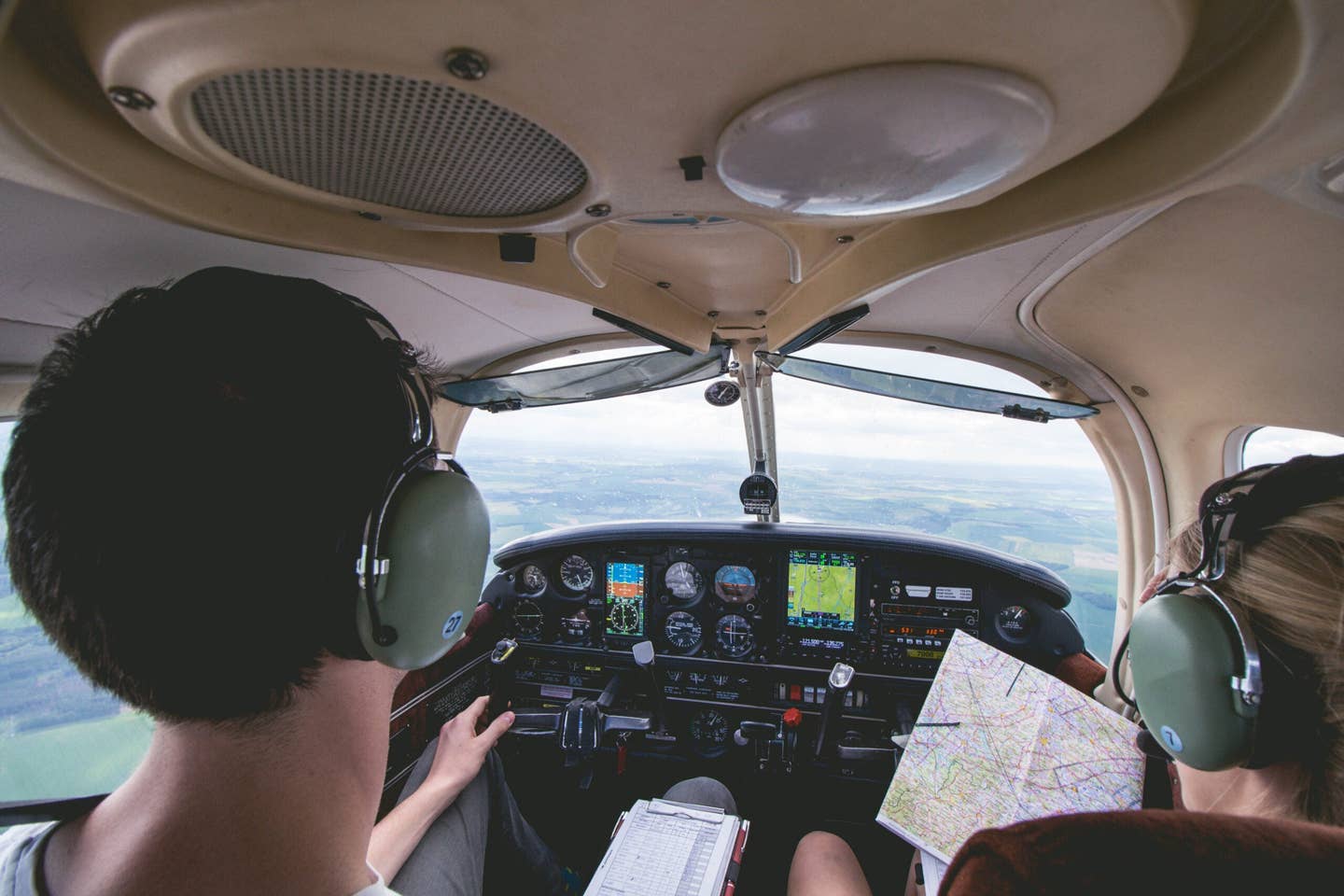
Gulfstream Enhanced Vision System (EVS) Since the earliest days of flight pilots have dreamed of being able to see through darkness, haze, rain, fog and the other phenomena that can block our view of the runway. That dream became a reality last year when Gulfstream certified EVS on the GV.
The Gulfstream EVS uses a Kollsman infrared sensor mounted in the nose of the GV to detect light energy and display a monochrome image of the lights and terrain ahead on the head-up display (HUD) that sits in front of the pilot's eyes. The infrared sensor can detect airport and other lights, as you would expect, but it can also see light wave energy from the earth and objects on it. For example, the pavement of the runway is easily discernable from the grass beside it. Buildings, rocks and vehicles can also be seen under most circumstances.
The EVS allows qualified Gulfstream pilots to continue an ILS approach from the typical 200-foot decision height to 100 feet above the runway based on the EVS image alone. At the 100-foot point, the crew must be able to see the actual approach or runway lights to continue for a landing, but, as you can imagine, it is a rare day when the runway or its lights are not visible from 100 feet. And the approval is valid for any ILS runway, not just those served by the higher precision Category II and III ILS ground equipment.
Gulfstream's EVS is also very valuable on clear nights when making approaches into the so-called "black hole" runway that is not served by an ILS approach. Unlighted terrain is clearly in view with the EVS, and once on the ground, you can clearly see airplanes and vehicles moving on the airport, not just their position lights.
Virtually every maker of business jets has announced development of some form of enhanced or synthetic vision systems in recent months, but Gulfstream made the large investment in time and money to develop the necessary EVS technology first before there was an assurance such a system would ever work, and for that we salute them with a Flying Editors' Choice Award for 2002.
Bendix/King Wingman & Garmin GDL-49 Weather Link ServicesThe National Weather Service has a fantastic network of powerful precision weather radars named Nexrad. We can see Nexrad returns on everything from TV weather reports to preflight computer briefing services. But the radars are on the ground and were not much help when you were in the air until last year when Bendix/King and Garmin developed and delivered systems that can put that critical Nexrad picture-and other timely weather information-in the general aviation airplane cockpit.
The two companies have chosen different delivery methods, but the weather information and its usefulness is essentially the same. You can see Nexrad radar mosaic images from anyplace in the lower United States, plus other graphical and text reports. The information delivery technology for both systems has undeniable advantages and shortcomings, giving pilots a distinct choice of how to receive the current weather information that we all so urgently want.
The Bendix/King Wingman system uses a network of ground stations to broadcast Nexrad weather radar composite images, metar observations from airports, and soon lightning, plus other weather information. Because Bendix/King uses a ground-based network of transmitters it can send up data at a higher rate and thus broadcasts all the weather data it has for the entire country all of the time. The weather information is displayed on one of the Bendix/King KMD series of multifunction displays, and you use its controls to select what weather data you want to see. The obvious drawback of a ground-based broadcast system is that you must be within line-of-sight range of a transmitter to receive the signal, which eliminates reception on the ground before takeoff, or at low altitudes, except in rare cases when you are very near a transmitter. Bendix/King is adding ground stations as fast as it can and expects to offer continental coverage for airplanes flying above 5,000 feet, but there are still sizeable gaps in coverage at typical piston airplane altitudes.
The Garmin GDL-49 uses a low earth orbit satellite constellation to receive its weather data. Because the satellite hookup operates at a lower data rate than the ground-based network, Garmin uses a request-reply instead of a broadcast system. For example, you can ask the GDL-49 to see the Nexrad radar mosaic for 250 miles ahead of your nose. That request is then automatically sent up to the satellites, transmitted back to equipment on the ground that assembles the data to satisfy your request, and the data package is transmitted back down to the GDL receiver. The necessary satellites are in view at any altitude and there is virtually always a satellite available no matter what your position in the country. The request-reply exchange takes at least a couple of minutes and sometimes substantially longer if the satellite position is not ideal, but you are freed from the low altitude blank spots that remain in the ground-based network. The weather information received by the GDL-49 is displayed on either Garmin GNS 500 or 400 series navigators, so there is no need to install a new display in the panel.
Both the Garmin and Bendix/King datalink systems display the Nexrad weather images on their respective moving maps so you can see the radar targets in exact relationship to your present position and your course ahead. The radar information displayed by either system is at least a few minutes old, and areas of rain are displayed in rather large blocks, so you should not use the data to penetrate an area of convective activity, but you can certainly see all of the detail that you need to avoid the bad stuff by a comfortable margin.
Many companies are currently working on systems to deliver weather information to the cockpit, but both Bendix/King and Garmin started early, and then spent several years and sizeable sums to develop and certify their systems. For persevering in the face of sizeable technical and cost obstacles to deliver vital real-time weather to the cockpit at a price and in a suitable form for the general aviation pilot, we award Bendix/King and Garmin Flying Editors' Choice Awards for 2002.

Sign-up for newsletters & special offers!
Get the latest FLYING stories & special offers delivered directly to your inbox

